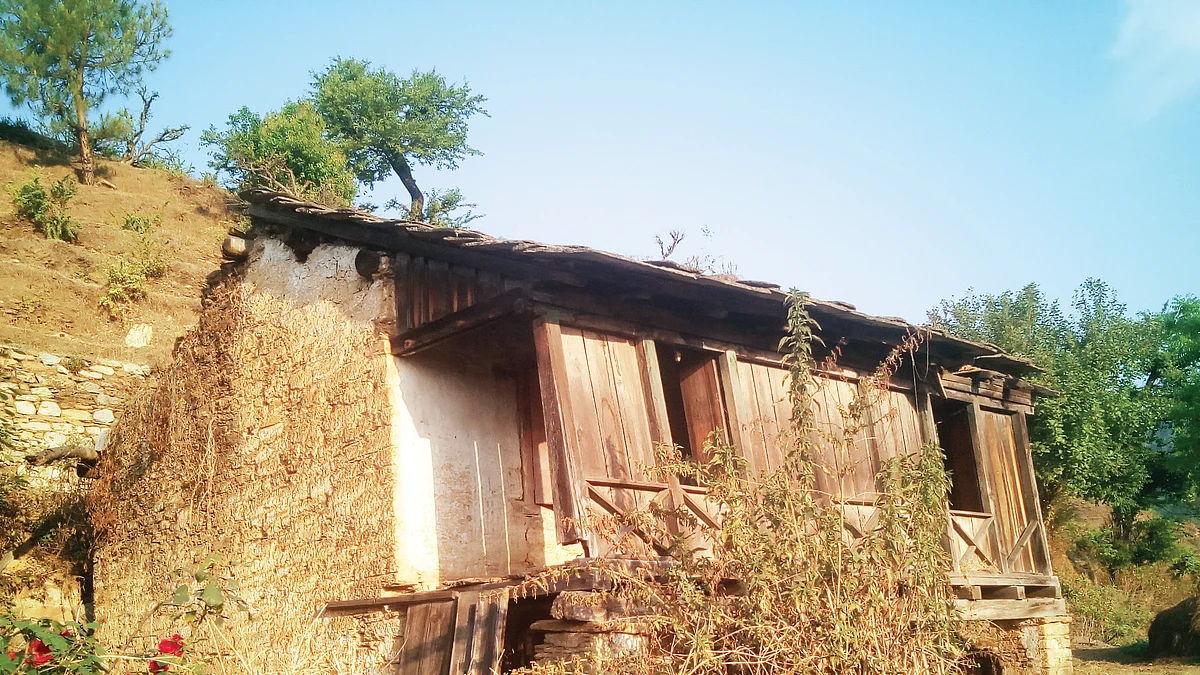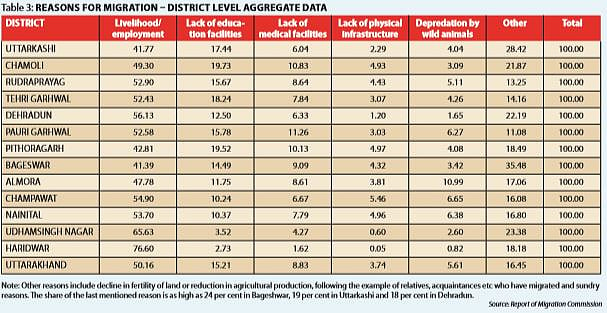Why are people migrating from Uttarakhand?
The main reasons for migrating, in order of importance, are desire for better livelihood, employment, education and medical facilities

The Migration Commission report serves to confirm what is already known about why people migrate.
The main reasons for migrating, in order of importance, are desire for better livelihood/ employment, education and medical facilities.
Together, these three reasons account for almost three-fourths of the reasons for migrating at the state level. In individual districts search for better livelihood/ employment remains the most important reason with its share ranging between 41 and 76 per cent.
Other reasons include decline in fertility of land or reduction in agricultural production, or following the footsteps of relatives, acquaintances who have migrated and ‘sundry’ reasons. The share of the last-mentioned reason is as high as 24 per cent in Bageshwar, 19 per cent in Uttarkashi and 18 per cent in Dehradun.
Desire for better livelihood and employment opportunities remains the dominant reason for migration ranging between 41 and 77 per cent in individual districts and 50 per cent in the State as a whole.

This is followed by lack of education facilities, lack of medical facilities and depredations of wild animals in that order, cited respectively by 15 per cent, 9 per cent and 6 per cent of the respondents in the state as a whole.
Not surprisingly, the share of these reasons in the predominantly plain districts of Udham Singh Nagar and Haridwar is much lower than in other districts. Significantly, depredation by wild animals emerges as an important reason mainly in Almora (11 per cent of respondents), and secondarily in Champawat (6.7 per cent of respondents), Nainital (6.4 per cent of respondents) and Pauri Garhwal (6.3 per cent of respondents).
Destination
The data shows that at the state level about 19 per cent of migrants go to nearby towns, 15 per cent to district headquarters, 36 per cent to other districts in the State and 29 per cent outside the State. Less than one per cent go outside the country.
In districts with relatively high urbanisation e.g. Dehradun, Haridwar and Nainital nearby towns attract the highest percentage of migrants. The one exception to this pattern is Uttarkashi which is not urbanised to the same level as the former three districts.
In the case of Almora and Pauri Garhwal the largest percentage of migrants, 47 and 34 respectively, have gone outside the state. One possible reason for this may be that these two districts have a fairly long history of migration, longer than other districts. As such people have been venturing out to different places spread across the northern region as well as metros like Delhi and Mumbai. Consequently, networks of relatives, friends and acquaintances would have been created in these places which may be tapped to facilitate the entry of new migrants.
Follow us on: Facebook, Twitter, Google News, Instagram
Join our official telegram channel (@nationalherald) and stay updated with the latest headlines